
Garapan: The Heart of Saipan
Discover Garapan, the vibrant capital of Saipan, where history, culture, and natural beauty converge in the heart of the Northern Mariana Islands.
Garapan, the vibrant capital of Saipan, is a gem in the Northern Mariana Islands. Known for its rich history, stunning beaches, and welcoming locals, Garapan offers a unique blend of natural beauty and cultural experiences. Garapan's history is deeply rooted in World War II. Visitors can explore historical sites like the American Memorial Park, dedicated to soldiers who lost their lives in the Pacific Theater. The park also offers a museum and picturesque walking paths. Nearby, the Last Command Post and Banzai Cliff are solemn reminders of the island's tumultuous past. Nature lovers will find paradise in Garapan. Micro Beach is the perfect spot for sunbathing, swimming, and snorkeling in crystal-clear waters. For a more adventurous experience, Managaha Island, just a short boat ride away, offers pristine beaches and vibrant marine life. The local culture is vibrant and welcoming. The Garapan Street Market is a must-visit, featuring local crafts, fresh produce, and delicious street food. Visitors can also enjoy traditional Chamorro and Carolinian music and dance performances, providing a glimpse into the island's heritage. Garapan's culinary scene is diverse and delightful. From fresh seafood to fusion cuisine, the local restaurants cater to all tastes. Don't miss out on trying the local delicacies, such as red rice and chicken kelaguen. With its mix of historical sites, natural wonders, and cultural experiences, Garapan is a perfect destination for travelers seeking both relaxation and adventure.
Local tips in Garapan
- Visit American Memorial Park early in the morning to avoid crowds and enjoy a peaceful stroll.
- Wear reef-safe sunscreen to protect the marine life while snorkeling at Micro Beach or Managaha Island.
- Try to visit Garapan Street Market on a Thursday night for the best local food and entertainment.
- Rent a bike to explore Garapan and its surroundings at your own pace.
- Bring cash, as many local vendors and markets do not accept credit cards.
Garapan: The Heart of Saipan
Garapan, the vibrant capital of Saipan, is a gem in the Northern Mariana Islands. Known for its rich history, stunning beaches, and welcoming locals, Garapan offers a unique blend of natural beauty and cultural experiences. Garapan's history is deeply rooted in World War II. Visitors can explore historical sites like the American Memorial Park, dedicated to soldiers who lost their lives in the Pacific Theater. The park also offers a museum and picturesque walking paths. Nearby, the Last Command Post and Banzai Cliff are solemn reminders of the island's tumultuous past. Nature lovers will find paradise in Garapan. Micro Beach is the perfect spot for sunbathing, swimming, and snorkeling in crystal-clear waters. For a more adventurous experience, Managaha Island, just a short boat ride away, offers pristine beaches and vibrant marine life. The local culture is vibrant and welcoming. The Garapan Street Market is a must-visit, featuring local crafts, fresh produce, and delicious street food. Visitors can also enjoy traditional Chamorro and Carolinian music and dance performances, providing a glimpse into the island's heritage. Garapan's culinary scene is diverse and delightful. From fresh seafood to fusion cuisine, the local restaurants cater to all tastes. Don't miss out on trying the local delicacies, such as red rice and chicken kelaguen. With its mix of historical sites, natural wonders, and cultural experiences, Garapan is a perfect destination for travelers seeking both relaxation and adventure.
When is the best time to go to Garapan?
Iconic landmarks you can’t miss
Crowne Plaza Resort Saipan, an IHG Hotel
Experience luxury and natural beauty at the Crowne Plaza Resort Saipan, your perfect tropical getaway in the Northern Mariana Islands.

Banzai Cliff Monument
Explore the breathtaking views and rich history at Banzai Cliff Monument, a significant site on Saipan's stunning coastline.

Hyatt Regency Saipan
Experience unparalleled luxury and breathtaking views at Hyatt Regency Saipan, a premier hotel in the stunning Northern Mariana Islands.
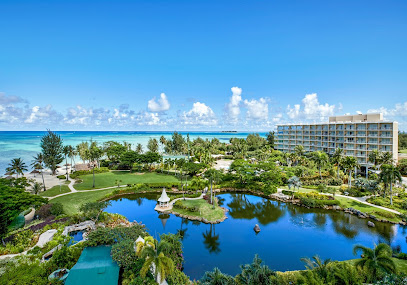
The Grotto
Discover the mesmerizing beauty of The Grotto in Saipan, a natural wonder perfect for snorkeling, diving, and stunning photography.

American Memorial Park
Discover the tranquil beauty and profound history of American Memorial Park, a serene tribute to World War II heroes in Saipan.

I Love Saipan
Discover a vibrant selection of local souvenirs and unique apparel at I Love Saipan, the ultimate shopping destination in the Northern Mariana Islands.

Cha Café and Bistro
Discover the vibrant flavors of Saipan at Cha Café and Bistro, where local ingredients meet a cozy atmosphere for an unforgettable dining experience.

Shirley's Coffee Shop Garapan
Experience the vibrant coffee culture at Shirley's Coffee Shop in Garapan, a perfect spot for tourists to enjoy local flavors and cozy ambiance.

The Shack, Saipan
Discover The Shack in Saipan, where delicious crepes and fresh meals meet stunning beach views in a cozy café atmosphere.

Grandvrio Resort Saipan
Experience the perfect blend of relaxation and adventure at Grandvrio Resort Saipan, a tropical paradise in the Northern Mariana Islands.

Godfather's Bar
Experience the vibrant nightlife of Saipan at Godfather's Bar, where great drinks, live music, and a welcoming atmosphere await you.

Loco Taco
Experience authentic Mexican cuisine in Garapan at Loco Taco, a self-service restaurant blending local flavors with traditional dishes.

Himawari Restaurant
Discover the authentic flavors of Japan at Himawari Restaurant, a top dining destination in Saipan, known for its fresh ingredients and inviting ambiance.

The Angry Penne
Experience authentic Italian cuisine in Saipan at The Angry Penne, offering a delightful menu of classic dishes in a vibrant mall setting.

Naked Fish Bar & Grill
Experience vibrant nightlife and delectable seafood at Naked Fish Bar & Grill, your ultimate dining destination in Saipan's tropical paradise.

Unmissable attractions to see
Saipan World Resort
Experience the ultimate tropical getaway at Saipan World Resort, where stunning ocean views and exciting water activities await you in the Northern Mariana Islands.

Bird Island Observatory
Experience the breathtaking views and vibrant birdlife at Bird Island Observatory in Saipan, Northern Mariana Islands, a paradise for nature lovers.

Kalabera Cave
Explore the captivating Kalabera Cave in Saipan, a historical tourist attraction rich in natural beauty and cultural significance.

Essential places to dine
J's Restaurant
Discover the vibrant flavors of Saipan at J's Restaurant – where local charm meets culinary excellence.

Loco Taco
Discover authentic Mexican flavors at Loco Taco in Saipan; enjoy fresh tacos and burritos in a vibrant self-service setting.
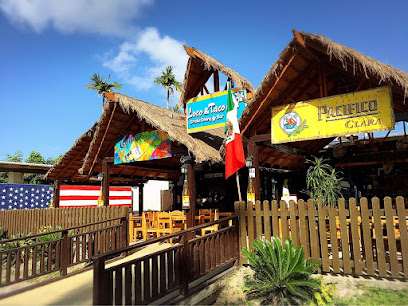
Himawari Restaurant
Discover the authentic flavors of Saipan at Himawari Restaurant, where fresh ingredients meet traditional culinary artistry.

Wild Bill's Bar & Grill
Experience a fusion of American and Asian cuisines at Wild Bill's Bar & Grill in Garapan - where flavor meets fun!

Kinpachi Japanese Restaurant
Discover authentic Japanese cuisine at Kinpachi Japanese Restaurant in Garapan – a culinary treasure for every tourist visiting Saipan.
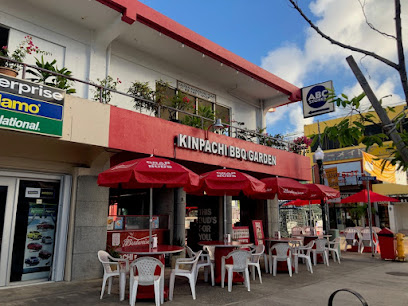
The Angry Penne
Experience authentic Italian cuisine at The Angry Penne in Saipan – where every dish tells a story of tradition and flavor.

SURA
Experience authentic Korean cuisine at SURA in Saipan – where every dish tells a story of tradition and flavor.

Naked Fish Bar & Grill
Experience delectable seafood and vibrant island culture at Naked Fish Bar & Grill in Saipan's stunning coastal setting.

Chung Gi Wa
Experience the vibrant flavors of Korea at Chung Gi Wa in Garapan - A culinary gem in Saipan offering unforgettable dishes.

Monster Pizza Pub
Discover Monster Pizza Pub in Garapan – where delicious pizzas meet an inviting atmosphere in Saipan's vibrant dining scene.

Plumeria Steakhouse
Experience culinary excellence at Plumeria Steakhouse in Saipan – where local flavors meet fine dining.
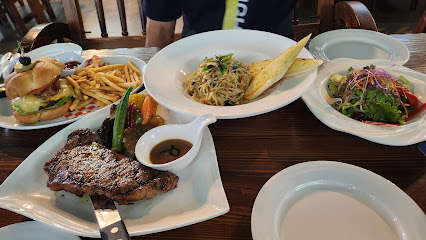
Jonny's Bar & Grill
Discover delicious grilled cuisine and vibrant sports entertainment at Jonny's Bar & Grill in Garapan - Saipan's go-to spot for food lovers.

Country House Restaurant
Experience exquisite dining at the Country House Restaurant in Saipan - where local flavors meet global cuisine in an enchanting setting.

Everest Kitchen
Experience authentic Nepalese flavors at Everest Kitchen in Garapan, Saipan - where every dish tells a story.

Garlic Grotto Restaurant
Discover Garlic Grotto Restaurant: A Culinary Haven in Saipan Offering Delicious Local Dishes with a Touch of Global Flavors.

Markets, malls and hidden boutiques
I Love Saipan
Explore the vibrant shop of I Love Saipan for one-of-a-kind souvenirs and local clothing that capture the beauty and culture of the Northern Mariana Islands.

T Galleria by DFS, Saipan
Experience luxury shopping at T Galleria by DFS in Saipan, where duty-free deals meet an exceptional selection of beauty, fashion, and more.

JOETEN HAFA ADAI SHOPPING CENTER
Experience local shopping at Joeten Hafa Adai Shopping Center, offering fresh produce, unique souvenirs, and a taste of Saipan's culture.

DFS Shoppers
Explore the vibrant DFS Shoppers in Garapan, Saipan, for a delightful duty-free shopping experience featuring luxury brands and local treasures.

670 Rock Steady Shop
Explore Saipan's vibrant culture through unique clothing at 670 Rock Steady Shop, a must-visit destination for fashion enthusiasts.

ABC Stores #702
Discover unique souvenirs and local crafts at ABC Stores #702 in Garapan, the ultimate gift shop for Saipan visitors.

Lollipops
Explore Lollipops in Saipan for a delightful shopping experience filled with toys and children's clothing that spark joy and creativity.

Hot Deals Saipan
Discover a shopper's paradise at Hot Deals Saipan, where local culture meets modern shopping in the heart of Garapan.

Mamastore 마마스토아
Discover unique souvenirs and local crafts at Mamastore, the premier gift shop in Saipan, Northern Mariana Islands.

August supermarket
Discover local flavors and fresh produce at August Supermarket in Garapan, Saipan – your gateway to the culinary delights of the Northern Mariana Islands.

Taro Sue Store
Explore unique local crafts and authentic souvenirs at Taro Sue Store in Saipan, a must-visit shopping destination for every traveler.

Martha's Store
Discover local flavors and essentials at Martha's Store, the go-to grocery destination in Saipan for travelers and locals alike.

Hybrid Shop
Discover the Hybrid Shop in Garapan, Saipan – your ultimate destination for unique gifts, trendy fashion, and local souvenirs.

LIBERTY DEPARTMENT STORE
Explore the vibrant Liberty Department Store in Saipan for a unique shopping experience filled with local treasures and quality products.

Made In Saipan
Explore the essence of Saipan at Made In Saipan, your go-to gift shop for authentic local crafts and unique souvenirs.

Essential bars & hidden hideouts
Godfather's Bar
Experience the vibrant nightlife of Saipan at Godfather's Bar, where great drinks, live music, and friendly service create unforgettable evenings.

Wild Bill's Bar & Grill
Experience an unforgettable dining adventure at Wild Bill's Bar & Grill, where diverse flavors and vibrant atmosphere meet in the heart of Saipan.
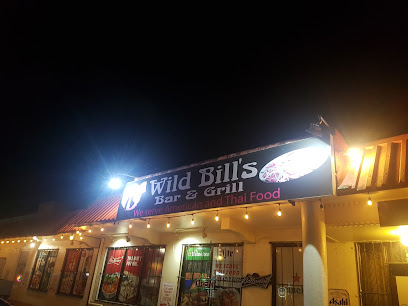
Naked Fish Bar & Grill
Discover the vibrant flavors and live music at Naked Fish Bar & Grill, Saipan's top spot for fresh seafood and refreshing drinks.
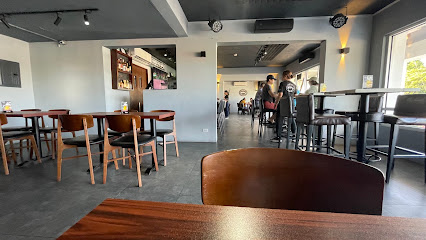
Jonny's Bar & Grill
Discover Jonny's Bar & Grill: A vibrant grill and sports bar in Garapan, offering delicious food, refreshing drinks, and live entertainment in Saipan.
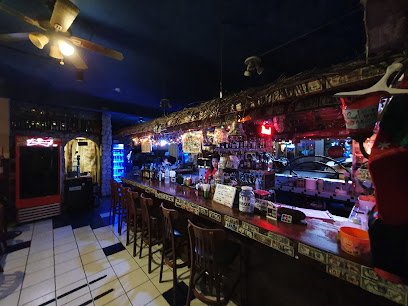
True North Bar And Grill
Experience the vibrant flavors of Saipan at True North Bar And Grill, where local and international cuisines meet in a tropical paradise.

Skipper's Beach Bar
Discover Skipper's Beach Bar in Saipan: your tropical retreat for cocktails, local cuisine, and breathtaking ocean views.
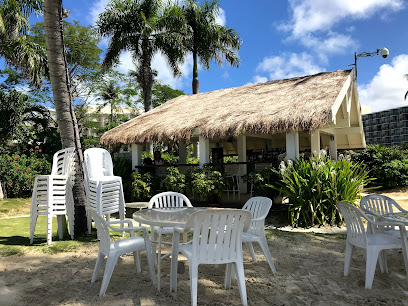
Safehouse Bar
Experience the vibrant nightlife at Safehouse Bar in Garapan, Saipan, where refreshing cocktails and friendly faces await you.

Tapped Out
Discover Saipan's vibrant brewpub culture at Tapped Out, where delicious food meets craft beer in a stunning garden setting.

Boss Karaoke Bar
Discover the vibrant nightlife of Saipan at Boss Karaoke Bar, where every night is a celebration of music and laughter.

VFW Bar
Discover the vibrant nightlife and local charm of VFW Bar in Garapan, a must-visit spot for tourists exploring Saipan.

Relox Bar
Discover the heart of Saipan nightlife at Relox Bar, where karaoke, drinks, and camaraderie come together for an unforgettable experience.

Cheers Karaoke Bar
Experience unforgettable nights of music and joy at Cheers Karaoke Bar in Garapan, Saipan - the ultimate karaoke destination for tourists.

6JMS BAR & GRILL
Experience the vibrant atmosphere of 6JMS Bar & Grill in Garapan, where delicious food and refreshing drinks meet island hospitality.

Mari Bar
Experience the vibrant nightlife at Mari Bar in Saipan, where exquisite cocktails meet a lively atmosphere for an unforgettable evening.

Sands Bar 金沙吧
Experience the vibrant nightlife of Saipan at Sands Bar, where tropical cocktails and good vibes await every evening.

Local Phrases
-
- HelloHåfa Adai
[HAH-fah AH-dye] - GoodbyeAdios
[AH-dyos] - YesHåo
[HOW] - NoTi
[TEE] - Please/You're welcomeSi Yu'us Ma'åse
[SEE YOO-oos MAH-ah-seh] - Thank youSi Yu'us Ma'åse
[SEE YOO-oos MAH-ah-seh] - Excuse me/SorryDispensa
[DEES-pehn-sah] - How are you?Kao maolek?
[KOW mah-oh-lek] - Fine. And you?Maolek. Yan iyo?
[mah-oh-lek YAHN EE-yoh] - Do you speak English?Kao kumuentos i inglés?
[KOW koo-mwehn-tos ee een-GLEHS] - I don't understandTi siña hu tåya
[TEE see-nyah hoo TA-ya]
- HelloHåfa Adai
-
- I'd like to see the menu, pleaseHu na'ån-hu gui menu, un tungo'!
[hoo nah-AHN-hoo gwee MEH-noo oon TOONG-goh] - I don't eat meatTi hu gof magågai
[TEE hoo gof mah-GAH-gye] - Cheers!Biba!
[BEE-bah] - I would like to pay, pleaseHu na'ån-hu gui finakpo'!
[hoo nah-AHN-hoo gwee fee-NAHK-paw]
- I'd like to see the menu, pleaseHu na'ån-hu gui menu, un tungo'!
-
- Help!Ayudame!
[AH-yoo-dah-meh] - Go away!Makmaka'go!
[mahk-mah-kah-GO] - Call the Police!Kåo i polisia!
[KOW ee po-LEE-syah] - Call a doctor!Kåo i manmagof!
[KOW ee mahn-MAH-gohf] - I'm lostHu matatnga'gu
[hoo mah-ta-TAHNG-goo] - I'm illHu tingo' mafana
[hoo TEENG-goh mah-FAH-nah]
- Help!Ayudame!
-
- I'd like to buy...Hu na'ån-hu gui...
[hoo nah-AHN-hoo gwee] - I'm just lookingAyo lang hu tuge'
[AH-yoh lahng hoo TOO-gey] - How much is it?Kåo na ti yan?
[KOW nah tee YAHN] - That's too expensiveLao na'ya kumuentos
[LAH-oh NAI-yah koo-mwehn-tos] - Can you lower the price?Falåo i kumuentos?
[fah-LAH-oh ee koo-mwehn-tos]
- I'd like to buy...Hu na'ån-hu gui...
-
- What time is it?Kåo na ti ora?
[KOW nah tee OH-rah] - It's one o'clockMa'insadotsi
[mah-een-sah-doht-see] - Half past (10)Mampos
[mahm-POHS] - MorningManana
[mah-NAH-nah] - AfternoonMa'åtodi
[mah-ah-doh-dee] - EveningAtdao
[aht-DAH-oh] - YesterdayKåha'na
[KOW-hah-nah] - TodayEstague
[eh-STAH-geh] - TomorrowMañåna
[mah-NYAH-nah] - 1Mågas
[MAH-gahs] - 2Lågu
[LAH-goo] - 3Tulu
[TOO-loo] - 4Fatfat
[FAHT-faht] - 5Lima
[LEE-mah] - 6Gunum
[GOO-noon] - 7Pito
[PEE-toh] - 8Guålu
[GWAH-loo] - 9Sigua
[SEE-gwah] - 10Månot
[MAH-nawt]
- What time is it?Kåo na ti ora?
-
- Where's a/the...?Kao na i...
[KOW nah ee] - What's the address?Kåo na i direksion?
[KOW nah ee dee-rehk-syon] - Can you show me (on the map)?Fanhåo i mapan?
[fahn-HAH-oh ee mah-PAHN] - When's the next (bus)?Kåo na i siguiente (bus)?
[KOW nah ee see-gwee-YEN-teh (boos)] - A ticket (to ....)Un tike (para ....)
[oon TEE-keh (PAH-rah)]
- Where's a/the...?Kao na i...
History of Garapan
-
Long before European contact, the area now known as Garapan was inhabited by the Chamorro people. They established thriving communities, evidenced by ancient latte stone structures scattered across the region. These megalithic pillars served as foundations for their homes and community buildings, reflecting a sophisticated society with skilled artisans and a rich cultural heritage.
-
In the early 16th century, Spanish explorers arrived in the Northern Mariana Islands. Garapan, along with the rest of Saipan, came under Spanish control in 1565. The Spanish influence significantly impacted local culture, introducing Christianity and new agricultural practices. The construction of stone churches and other colonial structures marked this era, some remnants of which can still be seen today.
-
Following the Spanish-American War, Spain sold the Northern Mariana Islands to Germany in 1899. Under German administration, Garapan became a focal point for economic development. The Germans introduced new industries, including copra production and phosphate mining, which brought prosperity and modernization to the area. Infrastructure improvements, such as roads and public buildings, were also initiated during this period.
-
After World War I, the League of Nations mandated the Northern Mariana Islands to Japan. Garapan flourished as the administrative and commercial hub of Saipan during Japanese rule from 1914 to 1944. The Japanese era saw significant urban development, including schools, hospitals, and a busy port. The town's layout and some of its buildings still reflect Japanese architectural influence.
-
Garapan witnessed intense conflict during World War II. The Battle of Saipan in June 1944 was a pivotal event, as American forces launched a major amphibious assault to capture the island from Japanese control. The battle left Garapan in ruins, but it also marked the beginning of the end for Japanese expansion in the Pacific. Today, several war memorials and relics commemorate this significant chapter in Garapan's history.
-
After World War II, the Northern Mariana Islands, including Garapan, came under United States administration. The post-war period focused on rebuilding the town and infrastructure. Garapan emerged as a central hub for government and commerce in Saipan, with new schools, hospitals, and other public services established to serve the growing population.
-
Today, Garapan is a vibrant town that blends historical heritage with modern amenities. It is a popular destination for tourists, offering a mix of cultural attractions, shopping, and dining experiences. The American Memorial Park, which honors the sacrifices made during World War II, and the Garapan Street Market, showcasing local crafts and cuisine, are key highlights that reflect the town's rich history and dynamic present.
Garapan Essentials
-
Garapan is located on the island of Saipan in the Northern Mariana Islands. The primary gateway to Garapan is through the Saipan International Airport (SPN), which receives flights from major hubs such as Guam, Tokyo, and Seoul. From the airport, you can take a taxi or arrange for a shuttle service to reach Garapan, which is approximately a 15-20 minute drive.
-
Within Garapan, transportation options include taxis, rental cars, and public buses. Taxis are a convenient option but can be relatively expensive. Car rentals are available and are a good choice if you plan to explore the island extensively. Public buses operate on main routes and can be a cost-effective way to get around, though they may not be as frequent or reliable as other modes of transport.
-
The official currency in the Northern Mariana Islands is the US Dollar (USD). Credit cards are widely accepted in hotels, restaurants, and larger stores. However, it is advisable to carry some cash for smaller establishments, local markets, and transportation. ATMs are available throughout Garapan, so withdrawing cash should not be an issue.
-
Garapan is generally considered safe for tourists. However, as with any destination, it is important to stay vigilant. Avoid walking alone late at night in secluded areas and keep an eye on your belongings in crowded places. There are no specific high-crime areas targeting tourists, but petty theft can occur, so always be cautious.
-
In case of an emergency, dial 911 for immediate assistance. The Garapan Police Station and medical facilities are well-equipped to handle emergencies. It is recommended to have travel insurance that covers medical emergencies. For minor health issues, there are several pharmacies in Garapan where you can purchase over-the-counter medications.
-
Fashion: Do wear lightweight, casual clothing suitable for a tropical climate. Avoid overly revealing clothing, especially when visiting cultural or religious sites. Religion: Do respect local customs and traditions. Public Transport: Do be respectful and courteous to drivers and other passengers. Greetings: Do greet people with a friendly 'Hafa Adai,' which is a local greeting. Eating & Drinking: Do try local Chamorro and Carolinian dishes and accept food offerings graciously. Don't waste food, as it is considered disrespectful.
-
To experience Garapan like a local, visit the Garapan Street Market held every Thursday evening, where you can enjoy local foods, crafts, and entertainment. Engage with locals who are often friendly and willing to share their culture and stories. Don't miss visiting historical sites such as American Memorial Park and the Last Command Post for a deeper understanding of the island's World War II history. For a unique experience, take a boat tour to nearby Managaha Island, a popular spot for snorkeling and relaxation.
Trending Landmark in Garapan
-
Crowne Plaza Resort Saipan, an IHG Hotel
-
Banzai Cliff Monument
-
Hyatt Regency Saipan
-
The Grotto
-
American Memorial Park
-
I Love Saipan
-
Cha Café and Bistro
-
Shirley's Coffee Shop Garapan
-
The Shack, Saipan
-
Grandvrio Resort Saipan
-
Godfather's Bar
-
Loco Taco
-
Himawari Restaurant
-
The Angry Penne
-
Naked Fish Bar & Grill
Nearby Cities to Garapan
-
Things To Do in Capital Hill
-
Things To Do in Saipan
-
Things To Do in Kagman
-
Things To Do in San Roque
-
Things To Do in Koblerville
-
Things To Do in Yigo
-
Things To Do in Dededo
-
Things To Do in Tamuning
-
Things To Do in Tumon
-
Things To Do in Mangilao
-
Things To Do in Hagåtña
-
Things To Do in Sinajana
-
Things To Do in Agana Heights
-
Things To Do in Santa Rita
-
Things To Do in Agat








